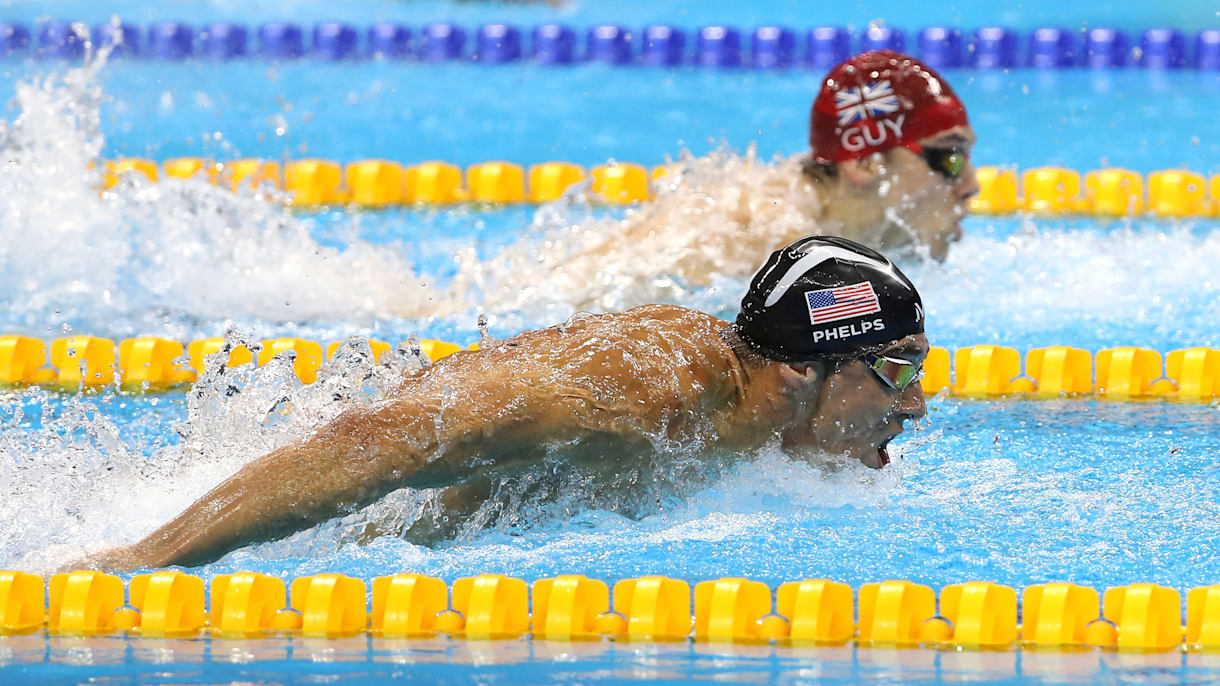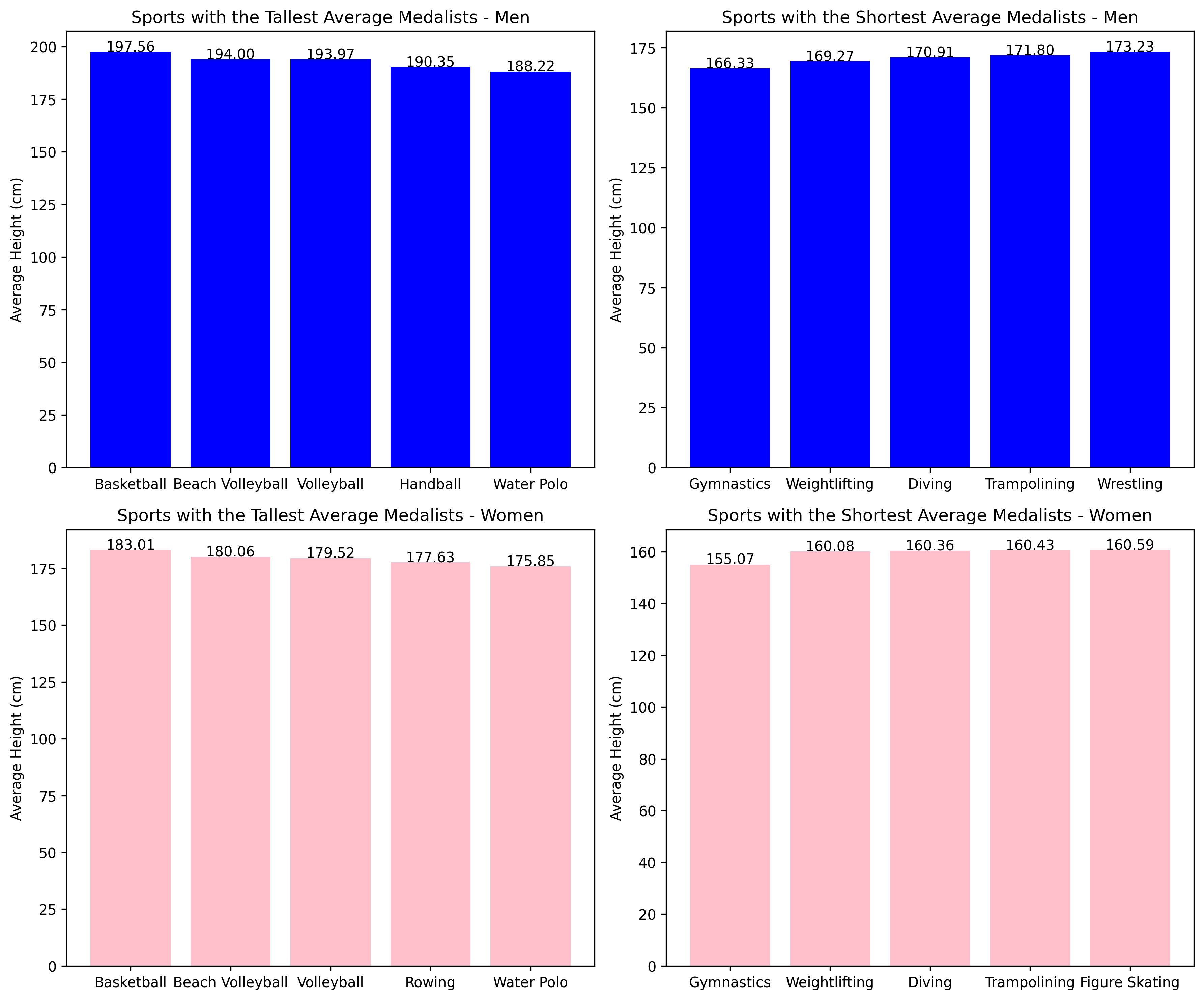The bar charts comparing average heights of Olympic medalists across different sports reveal intriguing insights into physical attributes and sporting success. In sports such as basketball, beach volleyball, and volleyball for both men and women, taller athletes tend to excel, with average heights well above 180 cm for women and nearly 200 cm for men, emphasizing the advantage of height in these disciplines. Conversely, sports like gymnastics and weightlifting show a preference for shorter athletes, with average heights significantly lower, around 155 cm for women and 166 cm for men, suggesting that agility, balance, and leverage could be key factors in these events.
Furthermore, the height disparity among medalists across sports underscores the varied physical demands and skill sets required; for instance, the agility and compact strength necessary for gymnastics versus the reach and blocking abilities critical in volleyball. This diversity highlights the beauty of the Olympic Games, where physical variations can both serve as an advantage and present unique challenges across the spectrum of sports. It also suggests that while physical traits may predispose athletes to success in certain sports, they do not preclude success across the board, as training, technique, and determination are equally pivotal in reaching the Olympic podium.
Your Webpage Title
The scatterplot titled "Number of Medals Won by Country in Historically 'Tall' Male Sports vs Average Male Height" illustrates several intriguing points. Firstly, there is a visible trend where countries with taller average male heights tend to win more medals in sports where height is considered an advantage. This suggests that physical characteristics can contribute to a competitive edge in certain disciplines.
Secondly, while the trend line indicates a positive relationship, there is considerable variation. Some countries with relatively taller individuals do not have a correspondingly high number of medals, indicating that height alone does not guarantee success in these sports. Other factors, such as training quality, athlete development programs, and investment in sports, are likely also significant contributors to a nation's success.
Lastly, the data points spread across the scatterplot reveal that countries with a wide range of average male heights have been successful in "tall" sports, which underscores the multifaceted nature of athletic achievement. It implies that while certain physical attributes may be beneficial, they are just one piece of a larger puzzle in attaining Olympic glory. The plot invites a deeper examination into how various nations leverage their unique attributes alongside other elements such as sports culture, infrastructure, and economic investment to foster high-performing athletes.
Your Webpage Title
The scatterplot titled "Number of Medals Won by Country in Historically 'Tall' Female Sports vs Average Female Height" provides a visual representation of how average female height correlates with Olympic success in sports where height is deemed beneficial. A trend is observed where countries with taller women tend to win more medals in these "tall" sports categories, which might suggest that height provides a competitive edge in certain disciplines.
However, the data points are dispersed, indicating that there are countries with taller average female heights that do not necessarily have a high number of medals. This variation exemplifies that while height may be an advantageous attribute, it is not a standalone factor in determining success in sports. The underlying support systems, such as the development of sport-specific skills, access to quality training, and broader cultural factors, are also critical in nurturing elite athletes who can compete successfully on the international stage.
The plot also shows that some countries achieve notable Olympic success in these height-favored sports despite not having the tallest average female height. This emphasizes the effectiveness of their athlete development programs and potentially other cultural or structural advantages that enable these nations to excel. Overall, the visualization paints a picture that while physical traits like height are important, they must be complemented by other elements to translate into Olympic medals.



